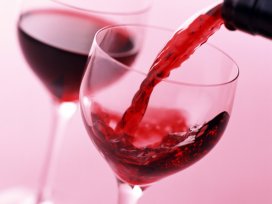In the past, the media has heavily overhyped the potential benefits of red wine. Finally, however, a clinical trial has actually suggested that there may be at least some benefit of red wine consumption.
In the study, subjects were divided into four groups: regular diet + no exercise, regular diet + no exercise + red wine, Mediterranean diet + exercise, and Mediterranean diet + exercise + red wine. Changes in markers of health were compared between groups to determine if the red wine had any effect.
Interestingly enough, the groups that consumed the red wine showed a dramatic rise in HDL and a decrease in triglyceride levels compared to the other groups, suggesting that there actually may be some health benefits to red wine consumption after all.
Conclusions
There have been many epidemiological studies in the past that have linked red wine consumption to decreased rates of cardiovascular disease and mortality. Most scientists, including myself, have believed that these results are likely due to confounding factors (i.e. people who drink more red wine have a higher socioeconomic status and more active social lives).
This is the first controlled trial that I am aware of that has actually demonstrated a cause-and-effect relationship between red wine consumption and markers of health.
Unfortunately, it is impossible to determine whether or not the decrease in triglyceride levels was due to an inhibition of triglyceride production or an elevated level of triglyceride clearance, and thus it is difficult to say whether or not this would have a long-term effect on cardiovascular health.
Nonetheless, the fact that HDL levels did rise does suggest that red wine likely does have at least some level of cardioprotective benefit after all.
References
1 Droste DW, et al. A daily glass of red wine associated with lifestyle changes independently improves blood lipids in patients with carotid arteriosclerosis: results from a randomized controlled trial. Nutrition Journal. 2013; 12(1):147.
